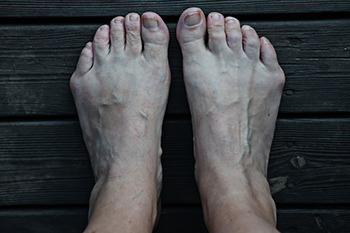
Connellsville


Bunionettes, also known as tailor's bunions, are a common foot deformity that affects the joint at the base of the little toe. Like their larger counterparts, bunions, bunionettes develop gradually and can cause significant discomfort and inconvenience. These bony protrusions often result from pressure or misalignment of the fifth metatarsal bone, leading to the toe deviating outward and the joint protruding. While the exact cause of bunionettes vary, factors such as wearing narrow or tight-fitting shoes, genetic predisposition, and underlying foot conditions can contribute to their formation. Individuals with bunionettes may experience pain, swelling, redness, and difficulty wearing certain shoes. Ignoring bunionettes can lead to worsening symptoms and potential complications, including bursitis or hammertoes. If you have a bunionette, it is suggested that you visit a podiatrist who can offer the treatment that is right for you.
If you are suffering from bunion pain, contact Dr. Arnold Tarpley, Jr. of Tarpley Foot and Ankle Center. Dr. Tarpley can provide the care you need to keep you pain-free and on your feet.
What Is a Bunion?
Bunions are painful bony bumps that usually develop on the inside of the foot at the joint of the big toe. As the deformity increases over time, it may become painful to walk and wear shoes. Women are more likely to exacerbate existing bunions since they often wear tight, narrow shoes that shift their toes together. Bunion pain can be relieved by wearing wider shoes with enough room for the toes.
Causes
Symptoms
In order to diagnose your bunion, your podiatrist may ask about your medical history, symptoms, and general health. Your doctor might also order an x-ray to take a closer look at your feet. Nonsurgical treatment options include orthotics, padding, icing, changes in footwear, and medication. If nonsurgical treatments don’t alleviate your bunion pain, surgery may be necessary.
If you have any questions, please feel free to contact one of our offices located in Uniontown, and Connellsville, PA . We offer the newest diagnostic and treatment technologies for all your foot care needs.